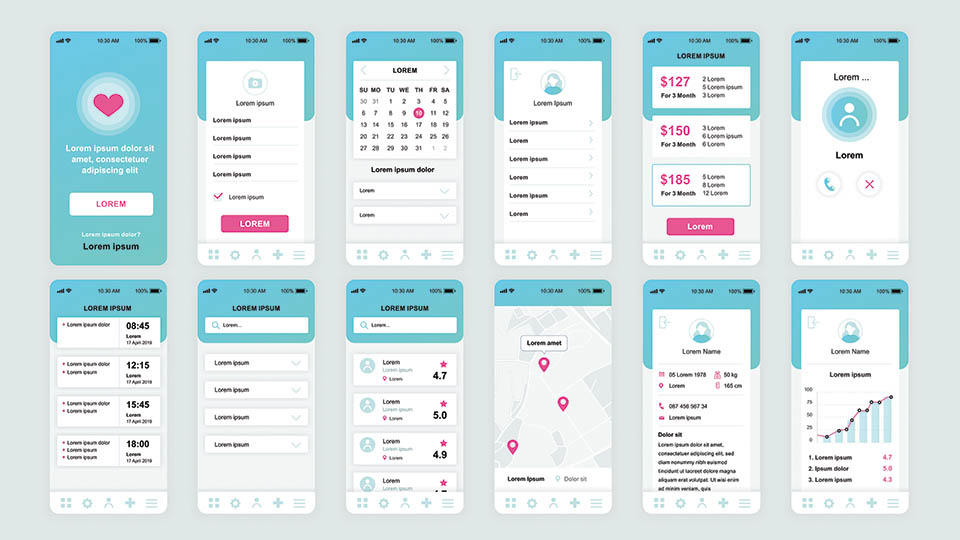Technology has been transforming the pharma and healthcare industry for years. Yet, with recent smartphone usage growth, the role of applications has increased even more. Patients expect to receive convenient services online and arrive at medical facilities only for treatment.
Applications that provide health-related services to patients are called patient-centric. It means the health app design and functionality focus on meeting patients' needs. In such apps, medical app UI design is of the utmost importance. Customers always look for a healthcare provider with an intuitive health app design. If you fail to offer it, they may choose another healthcare company.
Here are some tips from Software Development Company Empeek on UX design in healthcare.

In-App Healthcare User Experience as an Industry Trend
Today every business becomes centered around clients' needs. Healthcare services that continuously adopt innovative patient-centric software are not an exception. Digital apps make medical services more accessible to people in remote locations. They also simplify the life of patients who don't want or cannot visit offline health facilities.
While several years ago, the main task of medical software was to integrate medical teams, today, patients have lots of impact. Instead of reading paper reports, they can access records, communicate with clinicians, track health, and complete many other tasks in advanced apps connected to the provider's system.
To make all these in-app actions smooth and effective, development teams must take care of the healthcare user experience. Otherwise, people won't install such apps and may even change the provider if the software is too inconvenient. Thus, your app's UX may directly affect its market success.
UX in Healthcare: Why It Matters
Good UX design in healthcare software significantly improves the experience for parties using it. While patients get more control over their treatment records, doctors receive a reliable communication channel with patients. Besides, businesses offering healthcare apps enjoy higher user satisfaction and revenues as customer engagement grows.
Overall, healthcare user experience is about the quality of healthcare services. As more patient interactions move online, the way they happen becomes critical. People prefer providers that ensure the best remote access to consulting, medicines, preventive care, insurance processing, and other medical services. Moreover, UX customization can allow you to serve people with limited physical abilities that were undertreated before.
How to Make Health App Design User-Friendly
Now that you know why it's worth investing in professional UX/UI design let's mention what it implies. Here are the best UX/UI ideas to implement in a health app.
Know your target audience
User experience is about meeting the expectations of end users. Thus, you should create a user persona to map out what features they need. If it's a fitness app, users may want social media sharing. If you design an app for dementia patients, GPS tracking features are essential.
Ensure simple navigation
Healthcare apps usually include lots of data on patient health and treatment, which can make navigation quite confusing. Don't complicate things additionally with unnecessary steps or elements you can avoid.
Use colors wisely
Aggressive colors don't work for healthcare apps. Instead, focus on white, blue, or green. These are classic options for the medical industry that instill trust and look professional.
Pick the right typography
Healthcare apps provide critical information and must have readable fonts and text sizes. It's better to choose minimalistic sans-serifs over unusual decorative fonts.
Stay consistent
To help users with app management, make each page follow the same design guidelines. Consistency reduces cognitive load and enables people to complete the necessary action faster.
Mind people with limited physical abilities
If you provide an app for users with vision impairment, hearing problems, autism spectrum disorder, and other disabilities, you must adapt its UX/UI accordingly. You may implement a text enlargement tool, voice or gesture-based interface, or subtitles.
Prefer standard solutions
Healthcare software is the wrong place for experiments. People use it to solve urgent problems and expect standard menu elements and navigation flows.
Check loading speed
App performance is critical for a positive user experience, so you must keep the balance between UI elements and functional features. Don't overuse graphical elements and animations to keep the app fast.
See how others do it
You don't have to steal UX/UI ideas from competitors, but testing other similar apps can help you understand what you need. You may also spot user experience issues and avoid them in your app.

User experience is just as significant in healthcare apps as in other applications serving regular users. Since providers compete in the quality and ease of use of patient apps, you must follow the best UX/UI practices to keep up with others. So be sure to find an experienced designer to join your software development team.
 Samsung Galaxy S25
Samsung Galaxy S25  iQOO Neo6 SE
iQOO Neo6 SE  Multilaser MS80X
Multilaser MS80X Fairphone 4
Fairphone 4  Samsung Galaxy Mega 6.3
Samsung Galaxy Mega 6.3  LG K10
LG K10 

